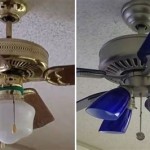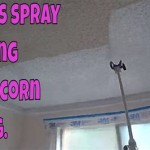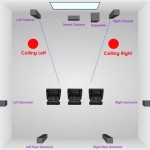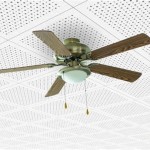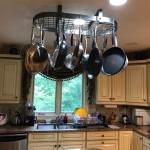How Much To Paint a Ceiling: A Comprehensive Guide
Painting a ceiling is a common home improvement project that can significantly enhance the aesthetic appeal of a room. However, determining the cost involved in this undertaking requires consideration of several factors. This article provides a detailed overview of the elements that influence the price of painting a ceiling, offering insights into budgeting and potentially saving money on this project.
Factors Influencing the Cost of Ceiling Painting
Several key factors contribute to the overall expense of painting a ceiling. These include the size and condition of the ceiling, the type of paint used, the labor costs involved, and any necessary preparations or repairs. Understanding these factors is crucial for accurate cost estimation.
The size of the ceiling is a primary determinant of the amount of paint and labor required. Larger ceilings naturally require more materials and time to complete, thus increasing the overall cost. Ceilings with complex shapes, such as vaulted or coffered ceilings, also tend to be more expensive due to the increased difficulty and time involved in painting them.
The condition of the ceiling plays a significant role in the overall cost. Ceilings with stains, water damage, cracks, or peeling paint require additional preparation before painting. This may involve cleaning, repairing cracks and holes, and applying primer to ensure proper adhesion of the new paint. These preparatory steps add to both the material and labor costs.
The type of paint selected directly impacts the price. Different types of paint vary in cost, quality, and application requirements. For example, a high-quality, stain-resistant paint will generally be more expensive than a standard flat paint. Specialized paints, such as those designed for bathrooms with moisture-resistant properties, also carry a higher price tag. Furthermore, the number of coats required will increase the total amount of paint needed, adding to the cost.
Labor costs represent a significant portion of the total expense of painting a ceiling. Labor rates vary based on location, the painter's experience level, and the complexity of the job. Hiring a professional painter generally ensures a higher quality finish and can save time and effort, but it also comes at a higher cost. Some painters charge by the hour, while others charge a flat rate per square foot.
Finally, any additional preparations or repairs beyond basic cleaning and patching will contribute to the overall cost. This may include removing popcorn ceilings, repairing extensive water damage, or addressing mold or mildew issues. These tasks require specialized skills and equipment, which will increase the cost of the project.
Average Cost Breakdown
To provide a clearer understanding of the cost involved, consider a breakdown of the average expenses associated with painting a ceiling. These figures are estimates and can vary depending on the specific factors outlined above.
The cost of paint typically ranges from $20 to $50 per gallon, depending on the quality and type of paint. A gallon of paint usually covers approximately 350 to 400 square feet with one coat. Therefore, a standard-sized room of 12x12 feet (144 square feet) would require less than half a gallon of paint for one coat, but it's always advisable to purchase at least a gallon for touch-ups and a second coat.
The cost of primer can range from $15 to $30 per gallon. Primer is essential for ensuring proper adhesion of the paint, especially on surfaces with stains or repairs. The amount of primer needed will depend on the ceiling's condition and the type of paint being used.
Labor costs for professional painters typically range from $2 to $6 per square foot. This rate can vary depending on the painter's experience, location, and the complexity of the job. For a 12x12 foot room, labor costs could range from $288 to $864. Some painters may offer a flat rate for the entire project, which can provide more cost certainty. It's always beneficial to obtain multiple quotes from different painters to compare prices and services.
Additional materials, such as rollers, brushes, tape, drop cloths, and patching compounds, can add approximately $20 to $50 to the overall cost. These materials are essential for achieving a professional-looking finish and protecting the surrounding areas from paint splatters.
Considering these factors, the total cost to paint a ceiling in a 12x12 foot room can range from approximately $350 to $1000, depending on the condition of the ceiling, the type of paint used, and the labor costs involved. This is a general estimate, and it's essential to obtain a personalized quote from a professional painter for a more accurate assessment.
Strategies for Saving Money on Ceiling Painting
While painting a ceiling can be a significant expense, there are several strategies to reduce the overall cost without compromising the quality of the finished product. These strategies involve careful planning, preparation, and consideration of alternative options.
Performing the job as a DIY project can significantly reduce costs. By taking on the task yourself, you can eliminate labor costs, which often represent a substantial portion of the overall expense. However, it's essential to assess your skills and experience before attempting to paint a ceiling yourself. Proper preparation and technique are crucial for achieving a professional-looking finish. If you're not confident in your abilities, it may be more cost-effective to hire a professional painter.
Thorough preparation can minimize the need for extensive repairs and additional materials. Cleaning the ceiling thoroughly, patching any cracks or holes, and applying primer can ensure proper adhesion of the paint and reduce the likelihood of future problems. Proper preparation can also save time and effort during the painting process, leading to a more efficient and cost-effective project.
Comparing paint prices and selecting a cost-effective option can also help reduce expenses. While it's important to choose a high-quality paint that provides good coverage and durability, it's not always necessary to opt for the most expensive brand. Researching different paint options and reading reviews can help you find a suitable paint that fits your budget. Buying paint in bulk can also save money, especially if you have multiple rooms to paint.
Requesting multiple quotes from different painters allows you to compare prices and services. Obtaining several quotes ensures you're getting a fair price and allows you to negotiate with painters to find the best deal. When comparing quotes, be sure to consider the painter's experience, reputation, and the scope of work included in the quote. Also, confirm whether the quote includes the cost of materials or if those are separate expenses.
Consider painting the ceiling as part of a larger home improvement project. Combining multiple painting projects can sometimes result in discounted rates from painters. Furthermore, planning the project during the off-season (typically winter) may also lead to lower labor costs as painters may be less busy.
By implementing these strategies, homeowners can effectively manage the cost of painting a ceiling and achieve a satisfying result without breaking the bank. Careful planning, preparation, and a bit of research can make a significant difference in the overall expense of the project.

How Much To Paint A Ceiling Original Style Painting And Decorating

How Much Does It Cost To Paint A Ceiling 2025 Data

How Much It Costs To Paint A Ceiling

How Much It Costs To Paint A Ceiling

How To Price Painting A Bedroom Vaulted Ceiling

How Much It Costs To Paint A Ceiling

How Much Does It Cost To Paint A House Interior Taskrabbit Blog

How Much Does It Cost To Paint A Ceiling Ramsden Painting

How Much Does Interior House Painting Cost A New Leaf

How To Best Paint Ceilings Valspar
Related Posts
